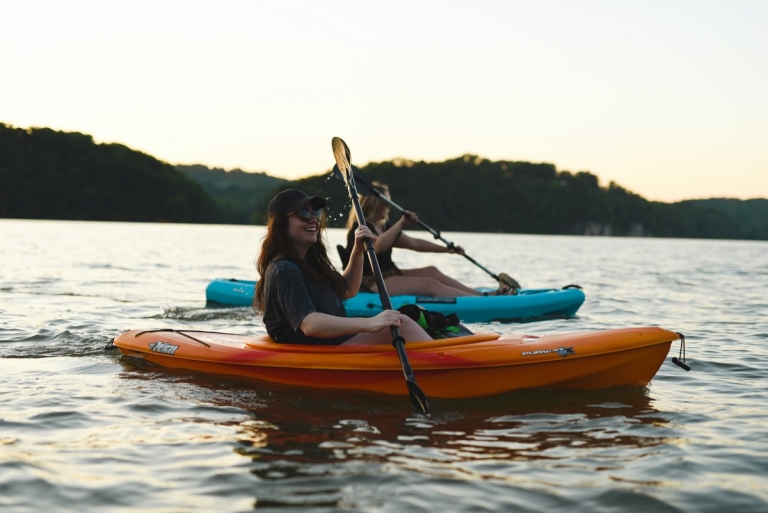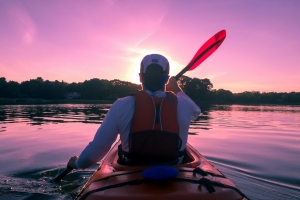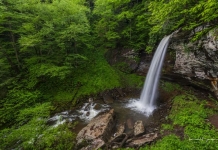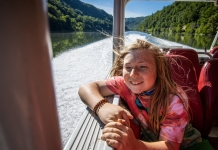
WILLIAMSTOWN, W.Va. — As interest in kayaking on the Ohio River in West Virginia increases, officials advise paddlers to be especially attentive to safety.
While the river may seem a sleepy reprieve in good weather, paddlers should be aware of barge traffic and inclement weather, according to Michael Schramm, visitor services manager for the Ohio River Islands National Wildlife Refuge.
In addition to wearing life jackets, Schramm advises boaters in kayaks to watch for wind, flooding, and waves that can also be powered by wind. Despite barge and ship traffic, kayakers should have ample time to paddle out of the way.
Waves
“Waves, to me, are the biggest threat on the Ohio River," Schramm said. "Most people think more about currents if they aren’t a kayaker already. The current really isn’t that strong: it’s only one to two miles per hour. It is annoying to paddle against it if you’re going upstream, but it’s not the end of the world."
Ships and Barges
If ships or barges are heading down the river, kayakers should have ample time to prepare and avoid their wakes.
“It’s all about how you orient your boat to those things if you don’t want to get broadsided by them. It helps if you can kayak them at an angle,” Schramm says. “Typically, you’ll have no problem getting out of the way of a barge if the wake intimidates you.”
However, wakes left behind by large boats are usually no more significant than waves on a windy day. “Actually, they can be quite a bit smaller than the normal waves you see on a windy day. The waves can get very big, and the key advice is don’t go kayaking on a windy day,” he says.
Wind
“Many kayakers new to the river might overlook the influence of wind on surface conditions,” he says. “If the wind is blowing parallel to the river, that’s a long stretch without any obstructions where the wind can whip up large waves. It doesn’t take much wind to create dangerous conditions.”
Flooding
Kayakers unaccustomed to big rivers should also pay close attention to the river’s conditions. In the days following a rainstorm, the current tends to run faster, and large debris may be floating downriver. Schramm says he would avoid kayaking during a high-water event.
Anytime the area experiences weather or runoff, Schramm says he would not go kayaking or advise it during the winter. But in the summer, even though the region experiences most of its precipitation then, there is more plant life to absorb that water.
“It doesn’t cause the flood events that you see following every rainstorm when there are no leaves on the trees,” he says.
Schramm says he would only kayak on a calm day if it hasn’t rained in a while and floodwaters have not entered the river. “If the river is full of mud, that’s a big warning sign. If it’s essentially green or clear, then that usually means it’s at a normal flow level, and it will be okay to go,” he says.
Ohio River refuge islands in W.Va. increasingly attract kayakers

Pete Nowicki)
More than 20 virtually forgotten islands in the Ohio River in West Virginia are increasingly attracting kayakers drawn by the opportunity to explore one of the nation's evolving wildlife refuges. Amid a landscape pulled from the pages of a Mark Twain novel, the islands, shorelines, and underwater habitat protected as part of the Ohio River Islands National Wildlife Refuge offer intrepid visitors a chance to explore little-known landscapes. READ THE FULL STORY HERE.





























Facebook Comments